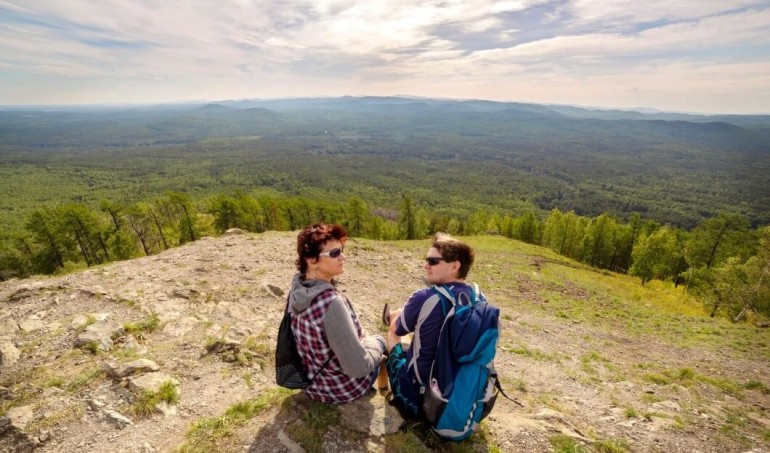Sponsored Listings:
Like the first Russian tourist, Peter the Great, three centuries later his fellow citizens love to open a window to Europe or anywhere else and travel freely around the world. The Covid-19 pandemic has closed that window, but many tourists have discovered the backyard of their own home, where the attractions and possibilities for vacations are also significantly rich – domestic tourism thus grows in popularity.
According to the data from the OneTwoTrip portal, Russian’s interest in domestic tourism grew by 20% in autumn during the weekends. There was a notable increase in interest in ecotourism and unusual accommodations in isolated natural areas. Camping, glamping (a combination of luxury and camping), ecohotels, as well as capsule hotels in picturesque places all rose in popularity in the last couple of months among Russian people.
The most sought-after destinations are still the two biggest cities, Moscow and Saint Petersburg, followed by Sochi and Krasnodar. However, interest in destinations such as Altai, Lake Baikal or Kamchatka has also increased.
The rebound of inland tourism has also helped keep popular destinations from being hit by the second wave of the Covid-19 pandemic. This is, for example, the case of the largest ski resort in Siberia, Sheregesh in the Kemerovo province.
Governmental Support
And the desire to travel domestically was also noted by the Russian government, which has started a program to support and promote domestic tourism.
One of the programs aims to support small and medium-sized enterprises, while another is the much-discussed cashback program for domestic trips, which entitles tourists to a refund of a part of their trip in Russia (about 20%).
According to the latest data, 15 billion rubles have been provided for this support measure. Up until now only about 1.2 billion have been utilized, but the government will not redistribute this money, as the service will be available also in the coming years.
The Golden Ring of Siberia
In this context, it is interesting to note a new tourism project which is being launched in the country. The Russian Geographical Society, along with the Tomsk State University, have been developing the so-called Golden Ring of Siberia route during the last four years.
This large-scale tour will take fifteen days and sixteen nights. It will include three flights, three railway crossings and two boat trips – on Lake Teletskoye and the famous Baikal. The planned opening of the route is in the spring of 2021.
In addition, Tomsk geographers are working on a winter version of the route. This will include elements of extreme and interactive tourism. For example, skiing in the already mentioned Sheregesh resort, visiting hot springs, winter fishing and an excursion to the Vasyugan swamp.

Domestic Tourism Also Vulnerable?
Nevertheless, it is not true that domestic tourism is completely bulletproof to the crisis and that the effects of the Covid-19 pandemic only paralyzed international tourism.
Over the last couple of weeks Russian tour operators have been registering massive cancellations of tours to Saint Petersburg for the New Year due to the announced restrictions on visiting restaurants, museums, theaters, for the sake of which Muscovites and other Russians traditionally travelled there during the winter holidays.
According to the press secretary of the Russian Union of Tour Operators, Irina Tyurina, already in November tour operators registered hotel reservations at 20%, while a year ago in the same month the occupancy rate was 65%.
Even regions famous for their ski resorts are being closed. For example, sales of tours to the Murmansk region are stopped. One of the reasons is also that the launch of the “Ski Express” of the Russian Railways between Moscow, Murmansk and the Khibiny mountains during the New Year holidays was cancelled due to the pandemic.
Operators traditionally involved in the development of domestic tourism say that the drop in numbers in 2020 was about 30-40% compared to 2019.
140 Million Trips by 2030
The situation in the sector could become more stable in the first half of 2021, when the adoption of a new national project for the development of internal tourism is set to be approved.
The purpose of this document, according to officials, is to increase the number of tourist trips across the country to 140 million and the number of employees in the industry to 5 million.
Source: tourism-review.com










